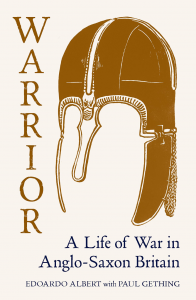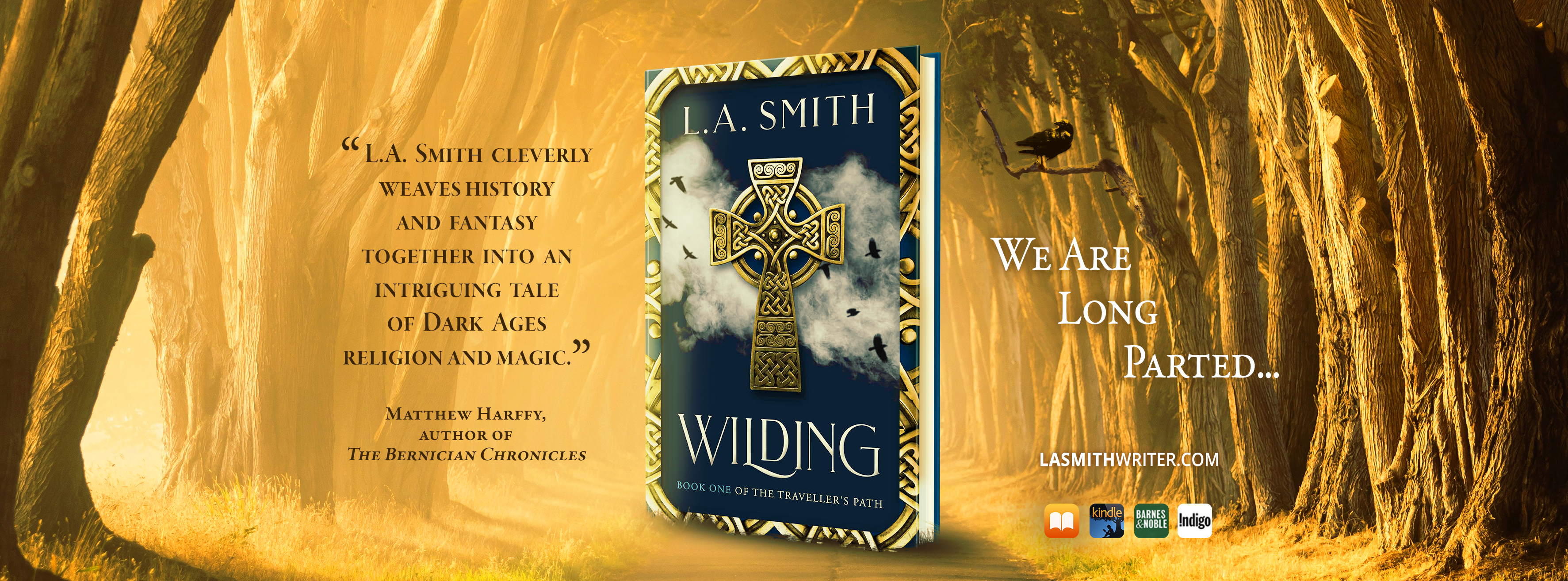
Newsletter
Yes! Send me my FREE short story collection and sign me up for those exclusive subscriber goodies!
We value your privacy, and will never spam you! View our privacy policy at lasmithwriter.com/privacy

Yes! Send me my FREE short story collection and sign me up for those exclusive subscriber goodies!
We value your privacy, and will never spam you! View our privacy policy at lasmithwriter.com/privacy
If you are astute readers of this blog, you will know that way back in 2016, I read and reviewed Edwin: High King of Britain, by Edoardo Albert, a wonderful novel about one of the 7th century kings of Northumbria. And I also had the privilege of interviewing him here on the blog about the book!
If you are really astute, you will also know that Mr. Albert did me the great honour of reading an early draft of Wilding and providing a promo quote for the book. I am so thrilled by that, I can’t even tell you.
Mr. Albert has published a few books since that last review. He continued the series begun with Edwin with Oswald: Return of the King, and Oswiu: King of Kings. He wrote Conrad Monk and the Great Heathen Army (pub. 2018) and in September 2019 his newest book, Warrior: A Life of War in Anglo-Saxon Britain, was published.

I ordered a copy soon after it became available and eagerly settled down for a read. I was not disappointed. Warrior is a finely crafted non-fiction book which details the remarkable find of skeletal remains during an archeological dig at Bamburgh Castle* and gives us a rich picture of 7th century England as Albert details the life of that warrior.
Along the way, Albert gives us fascinating glimpses into the archeological work that went into the discovery. Who, exactly, was this man?
Well, of course, we can never know for certain who he was, but more details than you might think can be determined. Of course the sex and approximate age was fairly straightforward: this was a man in his late twenties or early thirties. Due to the level of muscular development shown by the bones he was likely a warrior. He had no obvious wounds (ie broken bones, shattered skull, etc) but that didn’t necessarily mean that he didn’t die because of a battle. Infections from battle wounds were a common threat and warriors often died of these infections, which wouldn’t show in the skeleton. Of course illness such as plague could also have been the cause of death. The skeleton is mute on that detail.
But even so, there was still things to learn. Carbon 14 dating showed a date of death: AD 635. This was close to the time of the Battle of Heavenfield, where Oswald, the returning king, defeated Cadwallon and became king of Bernicia. This man could have been at Oswald’s side in that battle, and possibly been injured in it, leading to his death. We don’t know.
But one more thing the team discovered about the man really began to put a picture together of who he was. They had some funding for some DNA analysis of the bones and what they found proved to be extremely interesting. This man was not a local. He had come from the northwest, from what is now the Scottish coast. They could even narrow it down to a specific place with some degree of certainty: Iona, site of the one of the great monasteries of the seventh century and part of the kingdom of Dál Riata.
These details began to flesh out the real-life person that lived and died so long ago. As Albert explains in the book, Oswald had been in exile in Dál Riata since the death of his father Æthelfrith, killed in battle in AD 616. Edwin became king of Deira, and Æthelfrith’s wife, Acha*, saw the writing on the wall and fled for her children’s safety to seek refuge at the court of Eochaid Buide, king of Dál Riata. Buide was likely a relation of the young princes, and these familial ties, along with some astute political realities, were enough for Buide to take them in.
Oswald and his brothers would have had a privileged place in the court of Eochaid Buide. They were given an education at the monastery of Iona, and there they left their pagan Saxon ways behind and became Christians. The Northumbrian princes also fought on their benefactor’s behalf in the various skirmishes of the Irish kingdoms.
Oswald might have been content to stay in Dál Riata. He was not the oldest son, and as such any thoughts of kingship would not have been foremost in his mind. Besides, Edwin’s kingdom was relatively stable for many years. But in AD 633 Edwin was deposed by the combined forces of Cadwallon of Gwynedd and Penda of Mercia. These events in Northumbria reached out across the miles and tapped the princes in exile on the shoulders. Oswald’s older brother Eanfrith was given the Bernician throne, but he didn’t last long. He was killed a year later in an attempt to make peace with the Cadwallon/Penda duo. And next up to the plate was Oswald.
The responsibility of restoring his father’s kingdom now rested on his shoulders. But the task was not his alone to accomplish. Because of his years in exile, he had become as a brother to the Dál Riatans, and had certainly gathered a war band around him. These fighting men were composed of some of the Northumbrians who had accompanied the young princes into exile all those years ago, and others, native to Dál Riata, whom he had fought alongside and with whom he had forged relationships.
The conclusion that Albert presents in Warrior is that this man, buried so long ago, was likely one of those warriors who accompanied Oswald on his journey back to Bamburgh to regain the Bernician throne from the British and Mercian usurpers.

Bamburgh Castle today. Nothing of Oswald’s fortress survives today, at least nothing above ground!
Albert gives the reader all sorts of interesting information about 7th century Britain, Northumbria, and the history of Anglo-Saxon archeology. But he also intersperses these chapters with a fictional tale of the warrior himself, what his life on Iona was like and how he came to die so far from home. This is not a dry history book. Albert obviously has a great deal of knowledge and interest in this era, and he brings the past to life in an engaging way.
Warrior is a fascinating mix of history and archeology, giving us a detailed glimpse of life in this long-ago time. I highly recommend this book!
*The dig was conducted by the Bamburgh Research Project. The co-author of the book, Paul Gething, was one of the archeologists on-site when the bones were discovered.
**As it so happens, Acha was Edwin’s sister.

You can buy my book on Amazon and other online retailers!